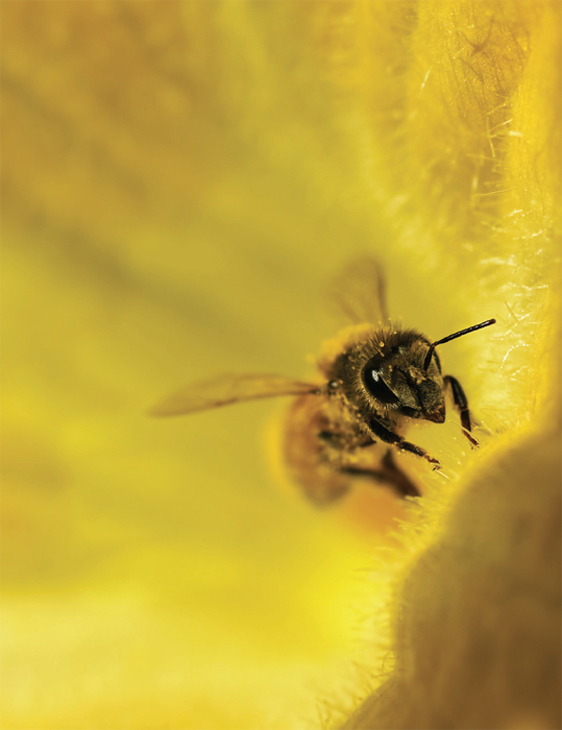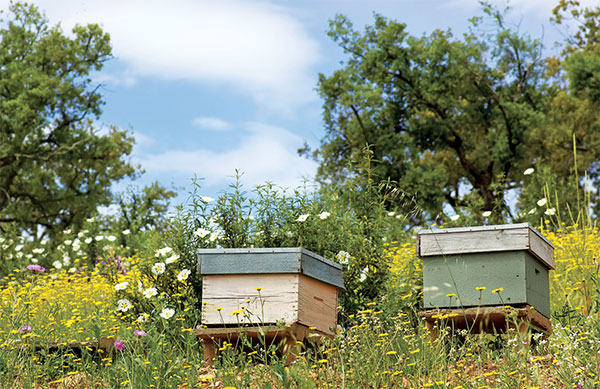
TERROIR: A PORTRAIT OF THE LAND
If you have noticed that local blueberries at your farmer’s market are delicious, plentiful, and affordably priced in midsummer, then you are acquainted with terroir. If you appreciate that the meal you prepared from what you grew in your own garden tastes better than the one you ate at a restaurant, then you have fully experienced terroir.
More challenging to pronounce than it is to understand, terroir is the French word for “earth”—not dirt, but soil and a host of environmental factors, notably the location of the soil. It is the reason those blueberries grew well there, that they enjoyed a soil that is well drained with a low pH and a climate with cooler winters. If they are plump and juicy, thank the terroir and the bees that pollinated them.
Goût de terroir or “taste of earth” is the centuries-old French concept that declares that wines produced in certain legally defined areas, called appellations, express those particular regions in taste and flavor. It also maintains that these wines cannot be duplicated in any other region without noticeable differences to its sensory qualities. This legal regulation is exercised in the form of a certification, called Appellation d’origine contrôlée (AOC), or Controlled Designations of Origin, which protects and identifies wine-producing regions. It is also granted to cheese, honey, and other agricultural products that express their native terrain. The French, like many other producers around the world, are extremely proud of their terroir and take it very seriously. Some wine-makers have gone as far as to taste their soil before planting their grapes, to ensure the best flavor characteristics for their harvest.
Terroir has been associated with wine for centuries, and winemakers understand the terroir of the region in which they grow their grapes and how it affects their wine. But recently terroir has also been attributed to the sensory qualities of tea, coffee, chocolate, and honey. Terroir is the story of the plants, animals, soil, geography, and climate of a place. It’s the unique mark Mother Nature leaves on the color, aroma, and flavor of all agricultural products produced in a clearly defined area. It is why the unusually sweet Vidalia onion grows only in Georgia, and why Wisconsin’s loamy soil is host to luscious grasses that dairy cows forage on to produce their tongue-twanging cheddar cheese. It’s the reason mesquite flourishes in the deserts of Arizona and that its honey has the aroma and flavor of warm sand.
Terroir is now being applied by beekeepers to the honey they produce, although the concept is even more complex with respect to honey than to wine. Honey produced from the same type of plant will have slightly different sensory characteristics when produced in two different regions. Clover honey produced in the midwestern United States is lighter in color and grassier in flavor than clover honey produced on the East Coast. Soil, climate, water, wind, and sun all contribute to every honey’s sensory attributes, including color, aroma, and flavor. That unpredictable mosaic of natural conditions ensures the subtle, but ever-changing profile of a varietal honey.
Region is not the only determinant, however. A honey bee colony that forages in the same field of clover could yield a honey that is remarkably different in color, aroma, and flavor from one year to the next. This is often because other types of plants besides clover bloom in that field at the same time the clover blooms, and honey bees mix the different nectars together inside the hive, creating an unpredictable flavor profile for every honey harvest.
It is also true in the theme of terroir that honey harvests can be extremely productive, average, or terrible in any given year. Mother Nature always has the last word. It is terroir that dictates which honey harvest will be bountiful and which flavors will be distinct and bright. These variables in honey production can and do change from year to year due to the ever-changing variables of the region that contributes to the final product. Often it seems that some of the best honeys are produced by chance—a quirk of rainfall, an unexpected heat wave, a cold snap that arrived too early, or even something as simple as a sea breeze.
Such unpredictable combinations of agricultural elements are responsible not only for the infinite colors, aromas, and flavor profiles of any honey but also for the quantity and quality of nectar produced. Artisan honeys, those honeys produced by small-scale beekeepers, are particularly vulnerable because they strive to highlight quality and character rather than quantity and consistency. The best honey that a region can offer depends on the local terroir, the characteristics of that location, but also on the beekeeping skills necessary to produce it.
Traditionally, honeys in the United States are named for the flower or plant type from which the nectar is gathered, not after the region where the honey is produced. This is unfortunate, because it neglects the subtle effects of terroir. Labeling all orange blossom honeys as such, no matter where they are produced, offers no details as to what you might expect to find in the color, aroma or flavor of a particular orange blossom honey. If a jar of honey carried on its label the name of the region where it was produced, consumers might have more insight into the effects of terroir and the characteristics of a honey as a product of a particular place. Consumers would have the option to choose their honey not only by plant source, but also by location of origin.
Terroir begins with the soil. Soil is the complex mineral and organic layer that covers our planet, and it varies considerably by region. The quality of the soil is an indicator of the health of a particular area. It also determines the type of honey plants that are capable of flourishing in a particular region. The largest part of all soil is made up of minerals—fragments of many different types of weathered rocks, as well as living and decaying organisms, including plants and animals. Minerals are an essential part of any soil; when dissolved in rainwater, mixed with air, and absorbed through a plant’s roots, they are responsible for the plant’s ability to grow, bloom, and yield pollen and nectar. Common minerals that are essential to a plant’s health and ability to convert sunlight into energy through photosynthesis include nitrogen, phosphorus, potassium, calcium, and magnesium. The pH of soil—how acidic or alkaline it is—is also a key factor in a plant’s ability to prosper and produce nectar. Some honey plants prefer acidic soil and others prefer alkaline. The overall condition of the soil, its quality and fertility, also matters a great deal when it comes to determining not only which type of honey plant will thrive in a particular region but also whether it will survive there.
Soil scientists have classified soil into twelve different orders. All twelve of these soil types are a combination of three general types: very fine particles from eroded rock known as clay; coarser particles from variable rocks like limestone, granite, gypsum, and feldspar, called sand; and loam, which is a combination of clay and sand. Clay soil is practically impermeable and holds less organic matter than either loam or sand. Sandy soil is very porous and has a low mineral content because of its inability to hold the minerals. Loamy soil is rich in with organic matter that retains water and provides necessary nutrients needed for plants. No matter the type of soil, there is a type of honey plant that will thrive in it.
The minerals found in the soil can also give honey its color. Light-colored honeys like citrus, rosemary, lavender, eucalyptus, and thyme contain high amounts of calcium. Darker honeys contain higher amounts of potassium, chlorine, sulfur, sodium, iron, manganese, and magnesium. Iron is what gives buckwheat honey its deep brown color. If iron in the soil becomes oxidized, it gives buckwheat a reddish hue. Glauconitic, or oxided, copper in water-saturated soils can give a green hue to honey like tupelo, while manganese turns up as a purple hue. Hematite adds a rich red tint to soils prevalent in hot desert or tropical climates, which in turn can show up in honey.
What does soil terroir taste like?
Common minerals and rocks found in the soil have significantly distinctive tastes. A few minerals and their taste descriptions follow:
Borax (sweet, alkaline)
Chalcanthite (sweet, metallic, and slightly poisonous)
Epsomite (bitter)
Glauberite (bitter, salty)
Halite (salty)
Hanksite (sulfate; salty)
Melanterite (iron; sweet, astringent, and metallic)
Sylvite (bitter)
Ulexite (alkaline)
Calcium Carbonate (chalky)
Magnesium Silicate (chalky)
Calcium Sulfate (chalky)
Botanists and geologists have divided the United States into eight distinct physiographic regions that generally define the distribution of our native flora and vegetation. Each region has its outstanding type of soil, geographic characteristics, and climate that influence the types of honey plants that can be found growing there. We can begin using these regional boundaries as a way of establishing the concept of terroir throughout the United States. Mapping our nation’s honey plants is a way to locate where varietal honeys can be produced and why they evolve in very specific conditions. Each of these eight regions has particular seasons, which affect the plants that grow there and their honey or nectar flows.
These distinctive regions can be referred to as American Apicultural Areas (AAA), much like the designated appellations for growing wine grapes in the United States, called American Viticulture Areas (AVA). Beekeepers looking for favorable locations for their bees to forage or looking to produce specific single varietal honeys will find the following list of these regions valuable:
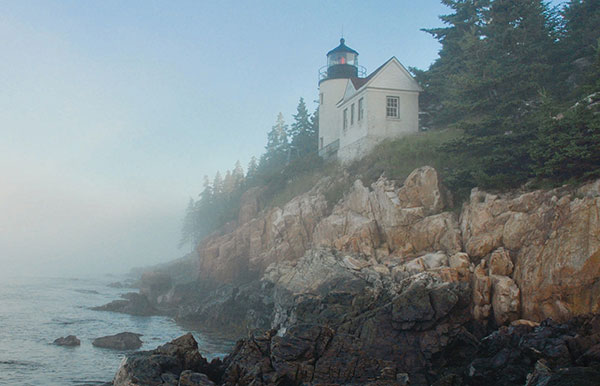
NEW ENGLAND
This region is composed of the Northeast and the Adirondack Mountains of northern New York and is defined by sandy, clay loam and limestone soils that are neutral or acidic. The area is defined by forests of pine, spruce, hemlock, maple, birch, and oak and rolling hills and mountains dotted with lakes, swamps, and sandy jagged coastline. The climate is humid, with wet and cloudy springs, warm summers, and cold winters. There are commonly fields of white and alsike clover and all types of berries, including raspberries, blueberries, and huckleberries. Goldenrod and sumac also thrive there.
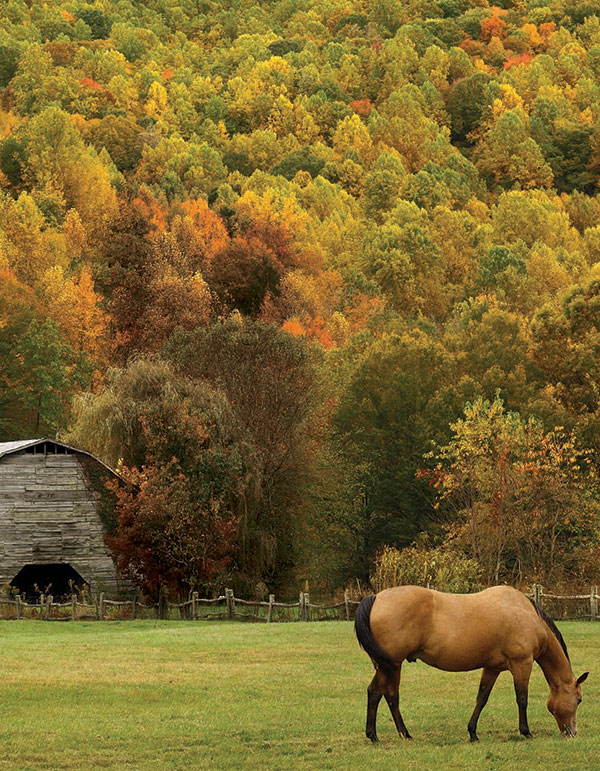
This region stretches from the Catskills in New York State to northern Georgia and Alabama and from northern New Jersey to eastern Alabama. The area is principally covered by forests of hardwood trees and is characterized by broad valleys and rugged mountains. Sedimentary and volcanic rocks make up this diverse area, and a multitude of rivers and streams provides drainage. The climate is typically cool to warm and wet most of the year. Broadleaf deciduous and evergreens trees characterize this area. Principal honey plants are sourwood, tulip poplar, sumac, honey locust, basswood, willow, and maples.

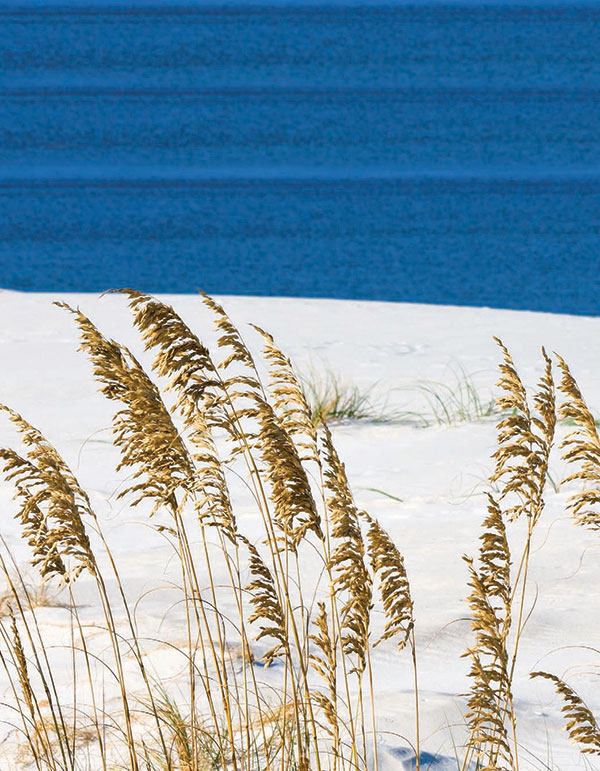
THE ATLANTIC AND GULF COAST PLAINS
This region includes the area closest to the coast that stretches from Maine to the Mexican border and Virginia to eastern Texas. It’s made up of relatively flat areas, with sandy and swampy regions, and is home to pine barren forest, river valleys, wetlands, and marshes. The climate is subtropical, with humid and hot summers then cool, windy winters. High-acidic swamps are fine places for gallberry, black and white tupelo, and black titi to flourish. This area is home to the Pine Barrens and cotton belt.

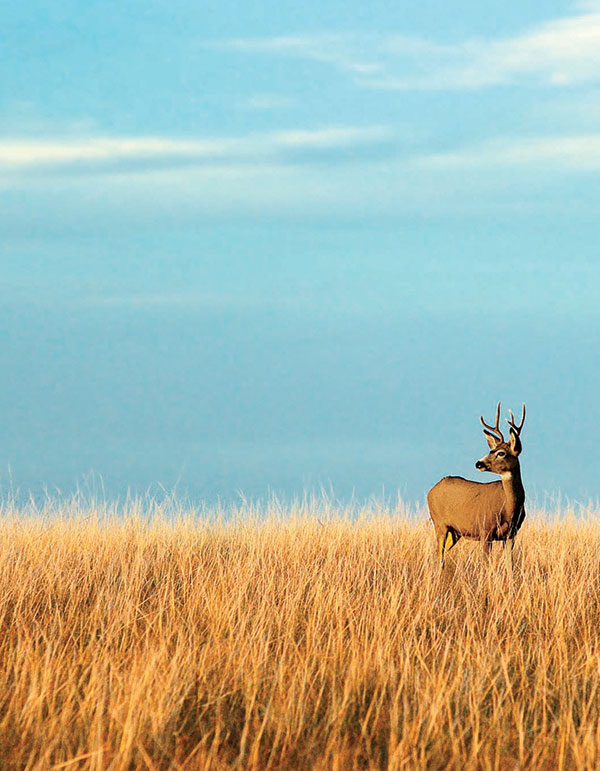
THE CENTRAL LOWLANDS OR UPPER MISSISSIPPI VALLEY
This region includes the central lowlands of the Gulf Coast Plains and is characterized by grassland prairies and the Mississippi floodplains. The rich soil is composed of sand and wind-blown silt. Primary honey plants are white and sweet clover, sunflowers, asters, Spanish needles, goldenrod, rudbeckia, and gum plants.


This area is due east of the Rocky Mountains between the Rockies and the Mississippi lowlands from Canada to the Rio Grande. It is a vast barren tableland with canyons, buttes, and rugged mountains creating microclimates of extreme temperatures and high winds. Generally arid and with fine soil, these grassland prairies feature abundant amounts of alfalfa and clover to keep commercial beekeepers in business. There are also sagebrush and greasewood.

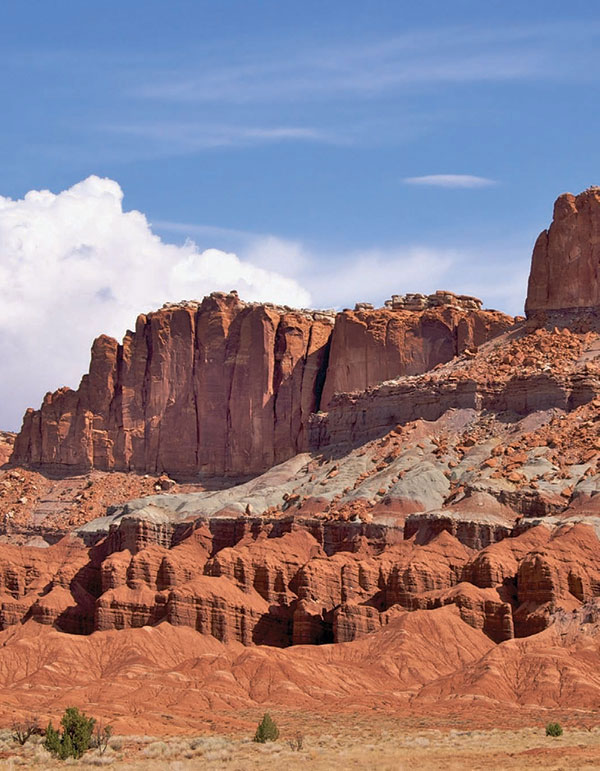
This region consists of parts of Idaho, Montana, Wyoming, Utah, Colorado, and New Mexico. It features rugged mountains with high elevations that include the Continental Divide. Bare vegetation, plateaus, and basins are home to spruce, pine, and hemlock forests. Alfalfa and clover can be found chiefly in Montana and Wyoming.


This region includes the desert regions of the Sierra Nevada and from eastern Washington State all the way to the cactus deserts of Texas. The climate is similar to that of the Mediterranean. It is dry with low humidity and frequent thunderstorms. Rolling hills, deep valleys, including Death Valley, and sandy, alkaline flats are characteristic of the area. Sagebrush grows in the north, and in the southern plains there are cactus, yucca, and agave. The mountainous regions are covered with coniferous trees, mesquite, saguaro, and other cacti and alfalfa.

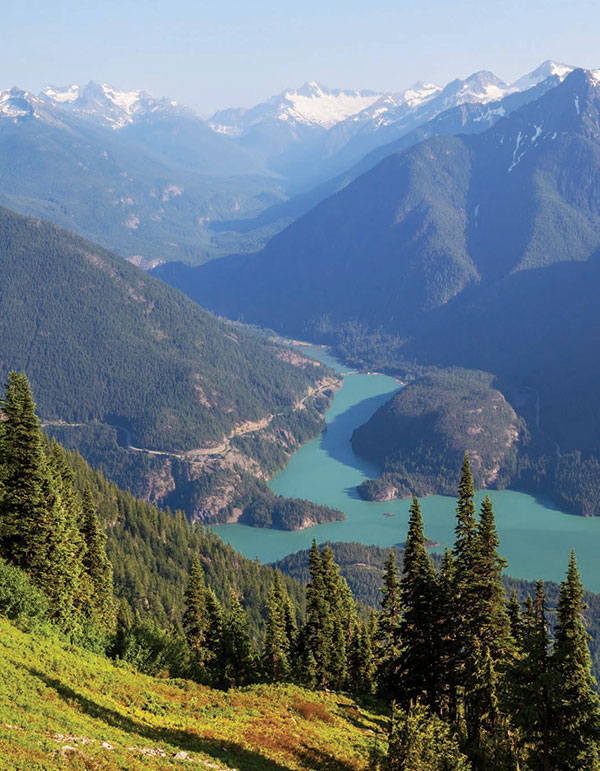
This region includes Alaska, Washington, Oregon, and California along the Pacific Coast. It’s characterized by heavy rainfall in the north, as well as ocean breezes, high coastal mountains, low and high deserts and fertile valleys. It is predominately home to fireweed, sage, orange, lavender, and eucalyptus.

Weather may vary from day to day, but over years or decades it follows a predictable pattern called climate. Climate includes precipitation, cloud cover, air temperature, atmospheric pressure, wind, rain, fog, and humidity; and it has a profound effect on all types of honey plants, as well as the bees that pollinate them and collect their nectar. As the weather follows its seasonal pattern, so do bloom times and nectar flows. In turn, these both affect the quantity and quality of nectar produced by local honey plants. Nectar flow can change depending on the terrain, latitude, altitude, and proximity to bodies of water of each region. When plants grow in their ideal conditions, they naturally produce nectar (assuming they are nectar producers); but when the climate changes, nectar secretion becomes less predictable and potentially less abundant.
Within some larger geographic regions lie smaller areas that defy the normal climate, called microclimates. They are commonly found near bodies of water, urban areas, or hilly regions, where the temperature, rainfall, and general weather conditions can change drastically within short distances. Whether the north side of your valley is cool and rainy or the southern side is hot and sunny with an occasional warm breeze matters a great deal to honey plants. Very slight temperature changes can disrupt nectar production. In extreme heat nectar may dry up, and plants may shut down. The relative surface temperature of the local soil also changes within regional microclimates. The slope of the terrain can affect the amount and length of sunlight plants receive. Nearby bodies of water can also affect humidity, sea or land breezes, and air and soil temperatures.
Water
Water exists as a liquid, solid, or vapor and moves between each of those states continuously within the earth’s hydrological cycle. It may begin as hail or snow, then melt into a liquid rain, then finally evaporate into fog or clouds. As water moves between those states, it mirrors the local terroir, reflecting the character of the local atmosphere and soil. Water can deposit minerals or deplete them from the soil and change its composition, texture, and ability to hold or absorb heat. Local conditions can ultimately affect the physical and sensory qualities of water, turning it hard or soft, with a high mineral or acidic content. The minerals found in water give it its characteristic taste.
Honey plants and honey bees need water to survive. But sometimes water can hinder honey bee activity and even nectar secretion or pollen production. A pounding rain can wash away an entire nectar flow while flowers are in bloom. An unexpected late snowstorm can destroy early blooming flowers, as often happens when apple trees bloom very early in the Northeast. And an early snowstorm can end an autumn honey flow from goldenrod and asters.
Wind
Wind can dramatically affect the temperature or humidity of a local region. Cool breezes are known to lower temperatures and cool down areas where extreme heat hinders maximum nectar secretion. Wind can also gently dehydrate nectar, which can be helpful to honey bees if not done to excess. Probably most important, breezes over about fifteen miles per hour will ground foraging honey bees, so even when all other factors are conducive to nectar gathering, if bees can’t fly, they can’t collect nectar and pollen.
Plants need energy from sunlight plus carbon dioxide from the atmosphere for photosynthesis to occur. Photosynthesis is the process by which plants convert light into energy to produce sugar and oxygen. The amount of sunlight available to a plant is determined by location, season, and climate and directly influences the process of photosynthesis and ultimately the secretion of nectar. Photosynthesis is so essential to plants that they will change their growing patterns in order to absorb more sunlight. They slowly bend their stems or turn their flowers and leaves to grow away from darkness. You’ve probably seen houseplants grow toward the window to gather the most sunlight. Plants that are deprived of sunlight will slowly stop producing nectar and eventually die, ultimately decreasing the chance of a decent honey harvest.
Seasons
There’s a general rule of thumb that bee-keepers follow about what kind of honey is produced during which season, and there’s good physiological reasoning behind that rule. Honeys produced in early to mid-spring tend to be lighter in color and milder in flavor than honeys produced in late spring through summer, which in turn tend to be a bit lighter in color and less robust in flavor than honeys produced in late summer and autumn, which tend to be the darkest and most full-bodied.
That general rule of thumb is supported by the kinds and numbers of plants that bloom during the seasons. Plants that bloom earlier in the year—think apple trees—tend to have relatively more flowers and will therefore send a smaller amount of sugars and proteins to sustain each of those flowers. A plant only has so much energy to expend, so if it produces thousands of blossoms, each will be smaller and of less value, whereas a plant with fewer blossoms will be able to send more energy to each blossom. A midsummer crop, such as white Dutch clover, has more time in the warmer weather to become established and so can afford to spend a little more energy on sugar and protein production while also competing with other plants that have the same advantage. Later-blooming plants—goldenrod, for example—need to be very attractive so they can entice as many pollinators as possible as fast as possible so they can set seed before killing frosts end their season. Thus, they produce armfuls of pollen to be additionally attractive to pollinators, and their nectars are rich with minerals and nutrients essential to honey bees.
These scenarios are good guidelines, but there are also many exceptions to the rule. For example, some dark, strong honeys, such as buckeye, are produced early in the spring; and some light, mild honeys, such as loosestrife, are produced later in the season. Then, of course, there are honeys such as buckwheat, which is always very dark to black in color, no matter the season or the location.
The timing of the nectar flow of every plant is crucial to beekeepers and the honey-making process. Missing a peak nectar flow means missing out on an opportunity to produce the most honey possible from that plant. Local conditions in each region and the variety of plant determine whether the nectar will be available in the morning or afternoon, for just a few hours or a few days. If weather conditions are severe, plants may not produce nectar at all, or the quality and quantity could be compromised. So the amount and type of honey that can be made depend upon nectar availability and its seasonality.
Honey Bee and Beekeeper Activity
Honey bee foraging habits are governed by flower constancy, so if there are large clusters of similar flowers in bloom and the weather cooperates, the chance of a honey harvest is good. Regions closer to the equator generally enjoy longer seasonal bloom periods and diverse vegetation compared to northern areas. Because plants along the equator flourish gradually, the conditions are ideal to produce single-source varietal honeys. Northern areas tend to have less diversity and shorter bloom times, and often bloom periods of different flowers overlap, making it more difficult to produce honey with a single flavor profile. One advantage, however, is that shorter bloom periods contribute to intense nectar flows and larger honey harvests. Honey bees will adapt their foraging habits accordingly but will always seek out the prosperous flowers with the highest sugar content. When a basswood tree is in full bloom and secreting nectar, it will have many flowers continuously blooming, and honey bees have the potential to gather large quantities of nectar over a short period of time or find a more desirable source. Sometimes there is competition from other pollinators that are also seeking nectar during the bloom season. When nectar sources become limited, honey bees may have to work harder and forage farther to gather what they need to make honey to survive. Every jar of honey is a detailed profile of which honey plants were blooming in a particular region at a very specific moment in time.
Indeed, it is the activity of the honey bee that makes the terroir of honey more complex than that of any other agricultural product, including wine and olive oil. We can’t ignore that the bees are an integral part of the honey-making process. Honey bees work in harmony with nature, and it is as essential for beekeepers to understand their bees’ activities as it is for them to know the soil, climate, and terrain in which the bees forage.
Honey bees are also subject to pests, diseases, and adverse environmental factors that affect their behavior and ability to produce honey. In order for a colony of honey bees to produce honey, they must have an appropriate population peak before the major bloom period in their area. Otherwise, as some old-time beekeepers put it, “They build on the honey flow”—that is, they ramp up brood production rather than store honey. Having the colony peak just before a honey flow means they have the largest possible adult population able to take advantage of the flow, rather than spend it on the young. Optimal management of a honey bee colony depends on both the beekeeper’s skill and the quality of the queen’s genetics.
Timely hive management is essential to optimal honey production and can mean the difference between a mediocre and a great honey crop. It starts with good fall management for successful wintering, proper and timely spring buildup of the colony and swarm control, and good brood production from the queen, all the while making sure there is more than adequate food available—whether supplied by Mother Nature or the beekeeper—to keep everybody well fed. Putting colonies in locations with a bounty of floral sources; timing the harvest so there’s always room in the hive; and handling the harvested crop with care and caution all matter to the quality, purity, and amount of the honey harvested.
For example, beeswax comb that’s old can be loaded with residues of propolis, dust and environmental debris, and pollen that stain the surface of the wax and can even be absorbed into the wax. When new honey is stored in darkly stained beeswax cells, some of the residue can be absorbed into the honey, altering the flavor and the color. Wise beekeepers replace old combs with a new clean foundation every two or, at most, three years to avoid that. Careful beekeepers also avoid harvesting frames of honey that aren’t fully ripened, or cured, to avoid mixing in nectar with high moisture content, which leads to fermentation. Using too much smoke or strong-smelling chemicals to usher the bees away from the frames in order to harvest the honey can lend a lingering burned or chemical flavor to the honey. And certainly the cleanliness of all of the equipment used is important—first, because honey is a food product, but also because soiled equipment, dirty storage tanks, or dusty surroundings can change the quality of the crop.
When and how honey is handled before, during, and after harvest can mean the difference between a honey crop that expresses its terroir and one that erases all traces of it.
Designating Terroir for Honey
In the European Union, terroir is closely associated with the tradition of identifying certain foods and honeys with the region where they are produced. This practice began in the fifteenth century, when the French parliament first set the standards to regulate Roquefort cheese. They declared that only those cheeses that were aged in the natural Combalou caves of Roquefort-sur-Soulzon could officially be named Roquefort. Although Roquefort-style cheese can be made in other places, it is the crumbly texture and distinctive flavors of sweet, smoky, and salty tang that are closely associated with the region where true Roquefort is produced. Throughout the E.U. and other parts of the world, specialty foods, wines, and honeys are recognized by the place where they are made. These regional foods include some honeys that are protected by a highly respected, legal certification system of labeling products, known as Geographic Indications (GI). This system is similar to the system of appellations used to identify where wine grapes are grown.
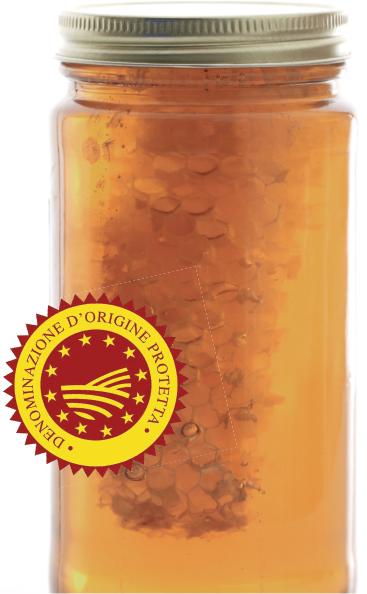
In order to be considered for the GI label, foods must meet all of the following government standards: They must be produced by traditional methods, possess certain characteristics, and enjoy a signature reputation as a result of the geographic region where they are produced. Geographic Indications are directly linked to a territory and the unique elements that sustain them. GI also raises consumer awareness and appreciation of regional products, reduces unfair competition from inferior copies, and helps producers secure premium prices for their goods.
Within the GI are three distinct regimes—Protected Designation of Origin (PDO), which protects the area or region where a food is produced; Protected Geographical Indication (PGI), which protects the name of the area or place where the product is produced; and Traditional Specialty Guaranteed (TSG), which designates the style or tradition of the product. These names have been in use since 1992 and are respected by the international community, except in the United States. Geographic Indication protection is directly associated with terroir in Europe and serves as a an official classification for products that meet those detailed standards.
There are honeys from Portugal, Italy, Spain, Greece, and France that have secured this recognition, as they are named after the region in which they were produced. The coveted Corsica honey of France is GI protected proclaiming the diverse vegetation on the island. Every bottle of honey is analyzed for quality and sensory standards and can be traced to a specific locale and date of harvest. These nectar sources are chestnut, citrus, and spring and autumn maquis (scrubland) honey. The Miele della Lunigiana, or Lunigiana honey, produced in the mountainous region of Tuscany along the Po River, follows strict traditional regulations of the Denominazione di Origine Protetta (DOP), or Controlled Designation of Origin. It is the first honey in Italy to be awarded the DOP status by the European Union. Lunigiana honey is produced from the local nectar of the acacia, chestnut, and wildflowers of this pristine region.
In the United States the only protection available for products, agricultural or otherwise, is in the form of a trademark issued by the U.S. Patent and Trademark Office (USPTO). This type of protection is identified not as a geographic indication but simply as ownership of a name that might happen to be a city or region. Philadelphia Cream Cheese and Chicago deep-dish pizza are foods associated with specific regions. These names act as a trademark, which simply declares ownership of the name and does not refer to the unique sensory qualities of the foods produced in these regions.
Nevertheless, beekeepers in the United States are beginning to proclaim terroir for their honey, some by numbering each jar to correspond with the hive from which it was harvested. Dates are also beginning to appear on labels stating when a honey was harvested and bottled in an effort to offer full disclosure to customers. Some beekeepers have begun to use zip codes, city names, and even street names to identify their honeys, offering traceability for every bottle. Rather than trying to establish a national definition of honey, savvy beekeepers are defining their honey by its location, embracing the concept of terroir. Differentiating their own honey from the sea of commercial honeys that exists serves to better inform the consumer and potentially protect buyers from cheap or illegal imports that may not be pure honey at all. Could we be returning to the practices of the ancient Egyptians of naming the beekeeper as the “sealer of the honey”?
